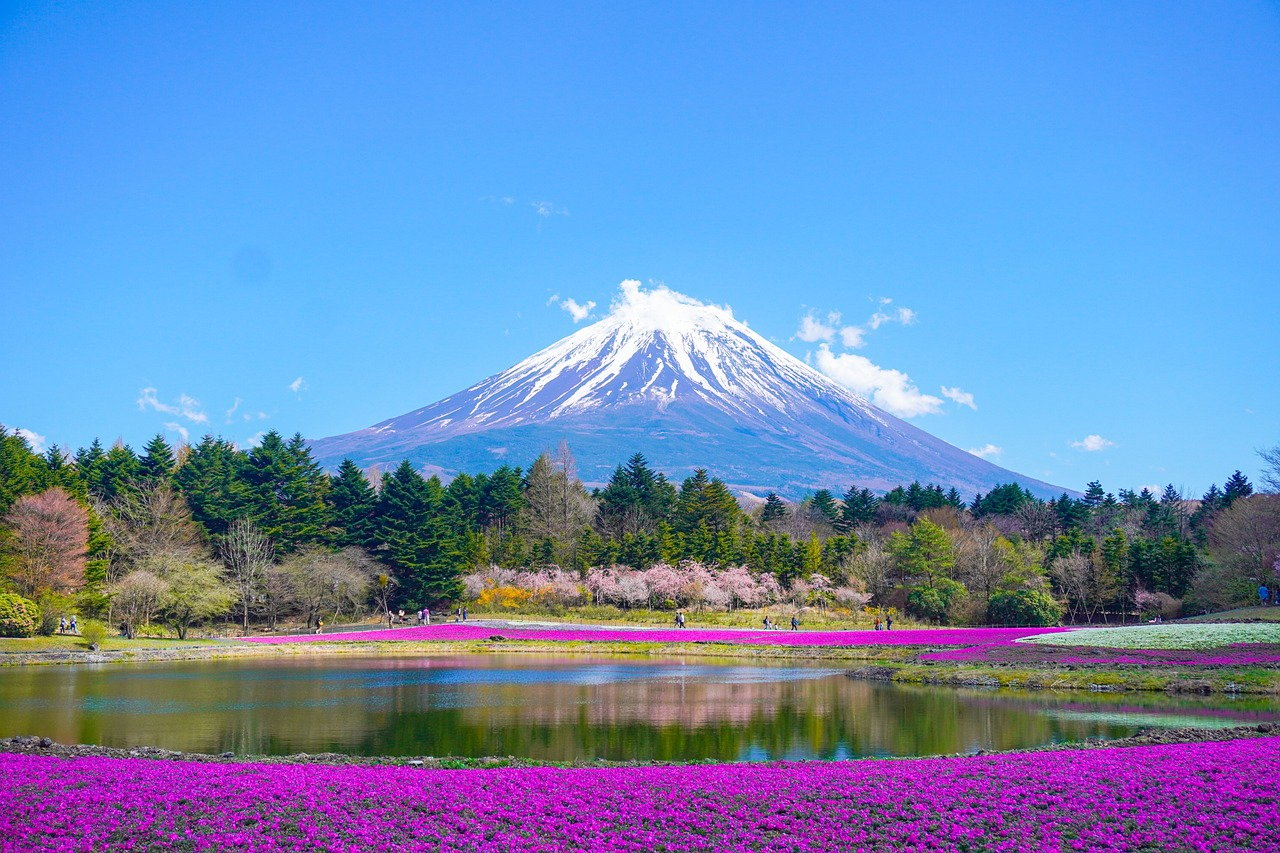
Pre-reading questions:
I will read each question. Then, please answer them.
- What do you think makes Mount Fuji an important place in Japan?
- What are some challenges you think hikers might face when climbing Mount Fuji?
Vocabulary:
I will read the words, meanings, and sample sentences. Then, repeat after me.
- overcrowding /oh-ver-KROW-ding/
- walk-in /WAWK-in/
- financially /fi-NAN-shuh-lee/
- lodging /LOJ-ing/
- pristine /PRIS-teen/
[noun] – when too many people are in one place, making it uncomfortable or unsafe
The concert was canceled because of overcrowding.
[noun] – a person who arrives without an appointment
The restaurant was so popular that even walk-ins had to wait for a table.
[adverb] – in a way that relates to money or finances
She managed to support herself financially through a part-time job.
[noun] – a place to stay, especially for a short period of time
We found lodging at a small hotel near the beach.
[adjective] – in its original condition; unspoiled
The park remained pristine because visitors took care not to litter.
Article reading:
Please read the whole article. Then, I will check your pronunciation and intonation.
To improve Mount Fuji’s Yoshida Trail, new regulations are in place, requiring hikers to plan ahead and pay a fee due to overcrowding, waste, and safety concerns. From July 1 to September 10, only 4,000 climbers daily are permitted, with most slots requiring online reservations. Some spots are kept for walk-ins. Climbers are encouraged to contribute financially to mountain upkeep. The rules aim to ensure environmental preservation and climbers’ safety. Hikers must choose between day or overnight treks at one of four “5th stations” before receiving a QR code, preventing night climbing without lodging. These measures aim to enhance safety and reduce littering, ensuring Mount Fuji remains pristine. Shizuoka Prefecture, neighboring Mount Fuji, initiated donation requests in 2014 and is considering further environmental protection regulations.
More and more tourists are going to Mount Fuji, almost like before the pandemic. The town of Fujikawaguchiko is starting to control the crowds of tourists who come because of things they saw on social media. This shows a bigger problem in Japan with too many tourists. After the pandemic, more people are visiting Japan because their money is worth more there. Experts think there will be more tourists than ever in 2024. The new rules for Mount Fuji are part of a plan to handle all these tourists and keep Japan’s natural and cultural treasures safe.
More and more tourists are going to Mount Fuji, almost like before the pandemic. The town of Fujikawaguchiko is starting to control the crowds of tourists who come because of things they saw on social media. This shows a bigger problem in Japan with too many tourists. After the pandemic, more people are visiting Japan because their money is worth more there. Experts think there will be more tourists than ever in 2024. The new rules for Mount Fuji are part of a plan to handle all these tourists and keep Japan’s natural and cultural treasures safe.
Comprehension questions
I will read each question. Then, please answer them based on the article.
- Why have new regulations been introduced for the Yoshida Trail on Mount Fuji?
- When is the climbing season for Mount Fuji according to the new regulations?
- How many climbers are allowed on the Yoshida Trail each day under the new rules?
- What must hikers obtain before they can climb Mount Fuji?
- Why is there a restriction on night climbing without lodging?
Discussion questions
I will read each question. Then, please answer them.
- Have you ever visited a popular tourist destination that was very crowded? If so, where did you go and what was it like? If not, what do you think it would be like?
- Have you ever planned a trip where you had to make reservations ahead of time? If so, what was the experience? If not, how do you think it would affect your travel plans?
- Do you agree with the decision to limit the number of climbers on Mount Fuji to 4,000 per day?
- How do you think social media impacts tourist destinations like Mount Fuji? Do you think this impact is mostly positive or negative?
- What measures do you think are necessary to balance the benefits of tourism with the need to protect natural and cultural sites?